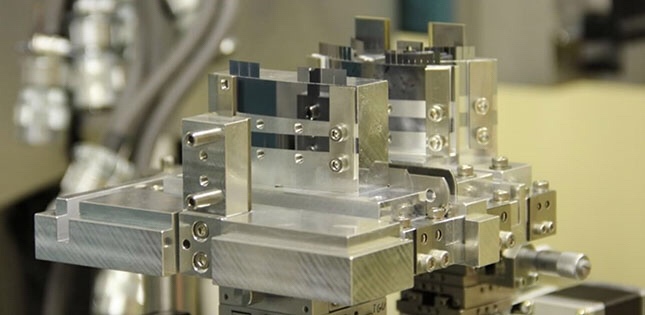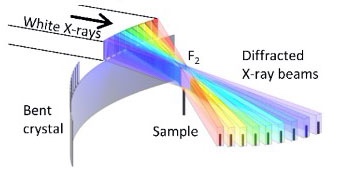


SPring-8:东北大学成功实现同步辐射多光束:动态3D观测/毫秒级
SPring-8:
[介绍要点]
在常规的X射线CT中,“必须以非常高的速度旋转样品才能从多个角度获取投影图像。”
世界上第一个成功开发的同步加速器辐射多光束技术,可以实现毫秒级/ X射线CT,而无需旋转样品
“流体样本和活生物体的动态3D观测可以在毫秒级完成”,有望在广泛的领域中得到应用
【概述】
东北大学:八代副教授
东京大学大学:副教授沃尔夫冈·沃杰里
筑波大学:工藤教授,
高亮度科学研究中心:高级研究员Kajiwara
联合研究组:
在世界范围内,我们无需旋转样品就成功实现了“同步脉冲辐射的同步,以实现毫秒级/ X射线CT”。
这项研究结果使“流体样本/生物体的动态3D观测”能够达到毫秒级。
应用领域:
可能引入各种示例环境
来自材料和生命科学的基础研究
适用于导致工业应用的广泛领域
预计将被应用。
这项研究的结果于2020年5月12日在线发表在学术期刊“ Optica”上。
东北大学-
https://www.tohoku.ac.jp/japanese/2020/05/press20200513-01-CT.html
成功的同步辐射多束毫秒X射线CT
-无需样品旋转即可进行动态3D观察-
重新测试结果:
八代副教授联合研究组
开发了用于将同步加速器辐射转换为多束光的X射线光学系统,如图1所示。
我们首次证明了3D重建可以以1毫秒(毫秒)的拍摄时间进行。
X射线CT的特点:
用于X射线CT的具有高穿透力的X射线通常与物质的相互作用小。
因此,传播的方向不能像通过镜子反射可见光那样容易地控制。
在这个研究中:
图1通过微加工制造了左上角形状的薄单晶。
如图1左下方所示,在双曲面上弯曲它。
如图3右侧所示,分为三个阶段,
我们已经成功地完成了“覆盖±70°投影方向的多光束光学系统的开发”。
案例说明:
图2左侧的投影图像示例
图2右侧显示了3D重建结果的示例。
SPring-8:
使用大型同步加速器辐射设备SPring-8的光束线BL28B2的同步加速器辐射进行实验(注2)。
利用这种同步辐射多光束技术,可以同时获取来自多个方向的投影图像。
无需旋转样品即可实现毫秒级的X射线CT。
三维重建:
注意,对于图2右侧的三维重建,可以仅从几十个方向上的投影图像重建图像。
使用基于最新压缩感测的算法(注3)。
未来展望:
可以以毫秒为单位对流体样本和活生物体进行动态3D观察。
也可以引入各种示例环境。
从材料和生命科学的基础研究到工业应用,它有望在广泛的领域产生连锁反应。
例如:
研究聚合物材料和粘合剂界面的断裂过程,
通过对活体昆虫进行3D观察进行动态仿生研究(注4),
我期待各种应用程序开发。
— SPring-8网站
http://www.spring8.or.jp/ja/news_publications/press_release/2020/200513_1/
Unlocking the gate to the millisecond CT
Many will undergo a CT scan at some point in their lifetime – being slid in and out of a tunnel as a large machine rotates around.
X-ray computed tomography, better known by its acronym CT, is a widely used method of obtaining cross-sectional images of objects.
Now a research team – led by Tohoku University Professor, Wataru Yashiro –
has developed a new method using intense synchrotron radiation that produces higher quality images within milliseconds.
High-speed, high-resolution X-ray CT
is currently possible using intense synchrotron radiation.
However, this requires samples to be rotated at high speed to obtain images from many directions. This would make CT scans more akin to a rollercoaster ride!
Extreme rotation also makes controlling the temperature or atmosphere of the sample impossible.
Nevertheless, the research team
solved this conundrum by creating an optical system that splits single synchrotron X-ray beams into many.
These beams then shine onto the sample from different directions at the same time; thus, negating the need to rotate the sample.
SPring-8 Web Site
http://www.spring8.or.jp/en/news_publications/press_release/2020/200513_1/?set_language=en&cl=en